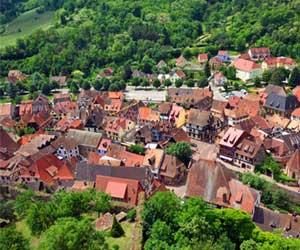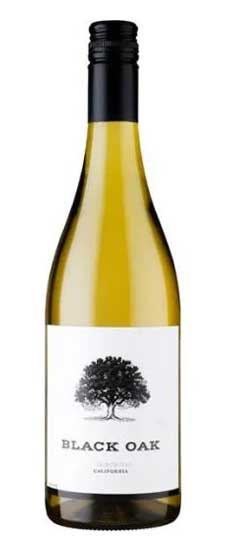Wine Score
Wine Advocate 89 points
Sourced form old vines in the Clos des Capucins and a plot in the Schlossberg, the 2015 Riesling Cuvee Theo displays a clear, ripe and characterful bouquet with spicy as well as pebbly/earthy and also floral flavors. This is a full-bodied, ripe and intense, yet not fully dry Riesling that displays warm fruit flavors on the round and charming palate. The wine is well structured by a good acidity and fine tannins, and should develop very well over the next 10 to 15 years. The residual sugar is just 5.22 grams per liter, but combined with the 13.68% of alcohol the sensation is slightly sweet. (Mar 2017)
Vinous 91 points
Pale straw-green. A hint of leesy complexity adds dimension to the stone fruit and mineral aromas and flavors. Juicy, precise and fresh, this finishes bright and long, with a twist of lime. From the roughly 40-year-old vines in the Clos. I find this to be much better than the somewhat disappointing, diffuse 2014 Riesling Cuvee Theo. (Mar 2017)
Wine Enthusiast 90 points
Aromatically ripe notes of peach and mandarin soar. The palate of this wine is equally generously fruited, with a vein of ripe lemon acidity at its fresh core. Juicy and very refreshing, it finishes dry and totally moreish with pink grapefruit. (Nov 2016)
Grape Variety
Riesling Wine
Riesling is a light-skinned, aromatic grape of German origin which is – if the majority of top wine critics are to be believed – the world’s finest white wine grape variety.
For many, the claim above may seem at odds with the sea of chaptalized, low-quality wine exported from Germany in the late 20th Century. In truth, very little of that infamous wine was Riesling at all, but instead higher-yielding grapes such as Müller-Thurgau and Silvaner), but the reputation has nonetheless stuck. Riesling has also been stereotyped as just a sweet grape, used only to make sticky wines. But while botrytized Rieslings are among the finest sweet wines in the world, the majority of global Riesling wines are either dry or off-dry.
Riesling vines above the Mosel
 The Riesling vine holds a very different place in the wine world to such great grapes as Cabernet Sauvignon, Merlot or Chardonnay. While these immensely popular varieties have conquered every corner of the winegrowing world, Riesling is conspicuously absent from the core wine regions of France, Spain and Italy. Its fanbase is smaller, but fervent.
The Riesling vine holds a very different place in the wine world to such great grapes as Cabernet Sauvignon, Merlot or Chardonnay. While these immensely popular varieties have conquered every corner of the winegrowing world, Riesling is conspicuously absent from the core wine regions of France, Spain and Italy. Its fanbase is smaller, but fervent.
Riesling’s spiritual home is unquestionably the regions that trace the middle Rhine and the lower Mosel, two of Europe’s great wine rivers. Here we find the key wine regions of Germany, most famously Mosel, Rheinhessen, Rheingau and Pfalz. Riesling vines cover the steep, slate-rich hillsides above these famous rivers, and are used to make crisp, refreshing wines with pronounced acidity.
On the other side of the Rhine lies Alsace, once German but now part of France. Here, Riesling is the most important wine grape variety in terms of both quantity and (arguably) quality. Alsace Riesling has its own individual style, richer and more generous than those made in Germany. This is made possible by the region’s sunny, dry mesoclimate and the shelter provided by the Vosges Mountains.
Austria also produces a large quantity of Riesling, most notably from its eastern Wachau and Kremstal regions. This is made mostly in drier styles, although Lake Neusiedl, just southeast of Vienna, creates a sufficiently humid climate for the production of sweet botrytized Riesling.
Happily, Riesling has found several New World niches to which it is very well suited. The high quality Rieslings now made in Australia’s Clare and Eden valleys have proved this with particular competence. Most notably, Clare Valley Riesling has emerged as a style in its own right, with crisp, citrus-scented acidity and aromas of toast and honeysuckle. Just across the Tasman Sea, New Zealand is also making high-quality Riesling in Canterbury and Otago, while South Africa’s Riesling is also showing promise. The famous ice wines of Canada are made mostly from Riesling or Vidal, and have further demonstrated the cold-resistant characteristics of this hard-wooded variety.
There are various clones and sub-varieties of Riesling in existence, and the variety has multiple variations on its name (e.g. Johannisberg Riesling, Rhine Riesling). To complicate matters, there are several white grape varieties that bear the name Riesling, but are entirely unrelated. The most notable of these are Welschriesling (Riesling Italico), Okanagan Riesling and Cape Riesling, which itself is also known as Crouchen, Paarl Riesling and Clare Riesling.
A rare, pink-skinned variant of Riesling – Roter Riesling – is grown in Germany and Austria. There is ongoing debate as to whether Roter Riesling is a mutated form of traditional Riesling, or vice-versa.
Synonyms include: Weisser Riesling, Johannisberg Riesling, Johannisberger, Rhine Riesling, Riesling Renano.
Food matches for Riesling include:
- Quiche Lorraine; zwiebelkuchen onion cakes (dry)
- Thai green curry (off-dry)
- Key lime pie (sweet)
Region
Clos des Capucins Wine
Clos des Capucins is one of the most respected vineyards in Alsace, with a long and distinguished history. The vineyard is a monopole of Domaine Weinbach, established in 1612 by the Capucin monks who built the clos. The Weinbach title was chosen by the monks for its symbolism. It means ‘The Stream of Wine’, a reference to the brook flowing through the estate en route from the lower Vosges to the Rhine.
Domaine Weinbach – and therefore the Clos des Capucins – is now owned by the Faller family. They acquired it in 1898 after it was seized as national property during the French Revolution. The clos has remained the domaine’s headquarters and flagship vineyard.
Clos des Capucins
 Kaysersberg, home to the Clos des Capucins
Kaysersberg, home to the Clos des Capucins
Not all of Domaine Weinbach’s wines come from the Clos des Capucins (it covers only 12 acres/5ha). The domaine also has vineyards within the Furstentum and Mambourg Grand Crus, just to the east, and in the Schlossberg Grand Cru on the hillside immediately above the clos. The Cuvee Theo wines, named after Theo Faller, are Riesling and Gewurztraminer wines produced exclusively from Clos des Capucins grapes.
The first references to the Capucin monastery here date back to the ninth century, although it is uncertain whether wine grapes were being grown in the clos as long ago as that. Whenever the first cuvees were made, the Clos des Capucins has secured a place in Alsace’s wine history.
Producer Notes
About Domaine Weinbach
Domaine Weinbach is a leading wine estate in the Alsace region. It is named after the “wine brook”, a small stream that runs through the main property, which is a former monastery near Kayserberg. The estate is known for its wines made at varying levels of sweetness from Riesling, Pinot Gris, Pinot Blanc, Sylvaner, Gewürztraminer and Muscat.
Domaine Weinbach
 Unusually for the region, Weinbach only uses estate-grown grapes. It has holdings in four nearby Grand Cru vineyards on the slopes of the Weisbach Valley – Schlossberg, Furstentum, Mambourg and Marckgrain. Weinbach also owns the famous 5-hectare (12-acre) monopole, Le Clos des Capucins, which surrounds the cellars just below Schlossberg, and the Altenbourg vineyard adjacent to Furstentum.
Unusually for the region, Weinbach only uses estate-grown grapes. It has holdings in four nearby Grand Cru vineyards on the slopes of the Weisbach Valley – Schlossberg, Furstentum, Mambourg and Marckgrain. Weinbach also owns the famous 5-hectare (12-acre) monopole, Le Clos des Capucins, which surrounds the cellars just below Schlossberg, and the Altenbourg vineyard adjacent to Furstentum.
All of the estate’s 28ha (69 acres) of vineyards have been farmed biodynamically since 2005 and are certified by Ecocert and Demeter. After a gentle, gradual pressing, the juice is slowly fermented in old oak vats using indigenous yeasts.
For several decades the estate was run by Colette Faller and her daughters, winemaker Laurence and sales director Catherine. Laurence died tragically young from a heart attack in 2014, and her mother passed away the following year. Catherine Faller now runs the estate with her sons.






